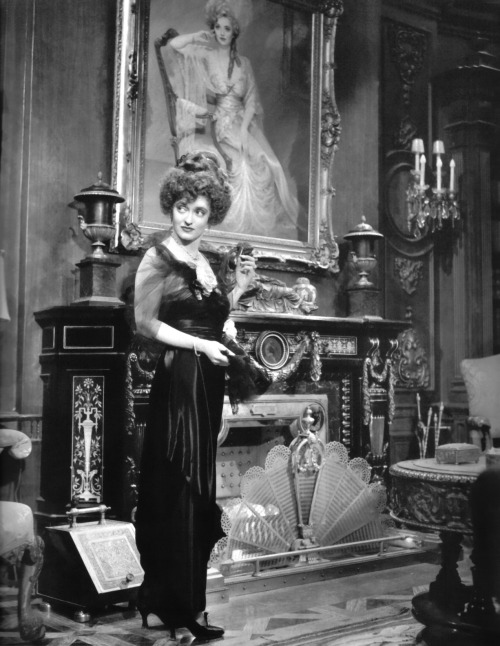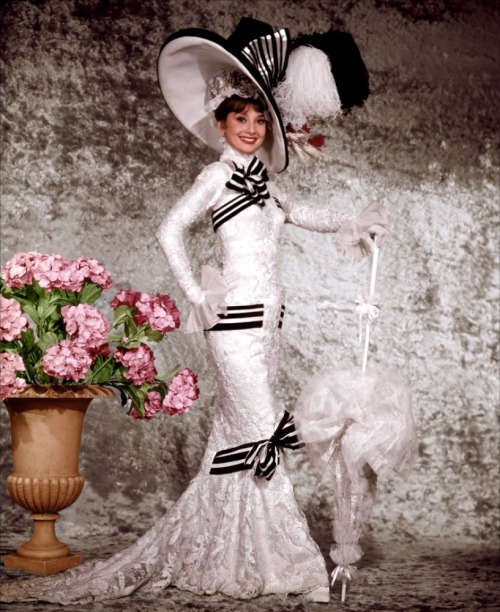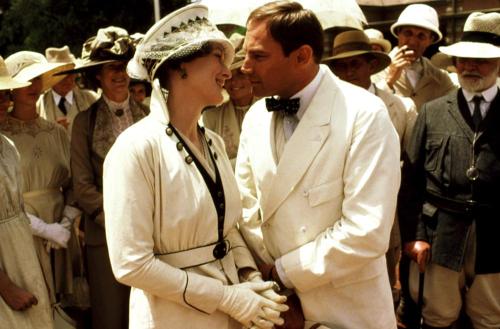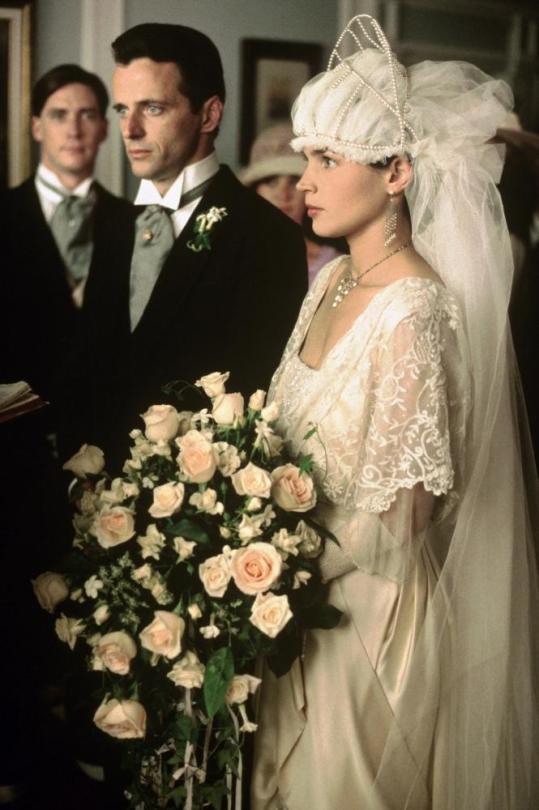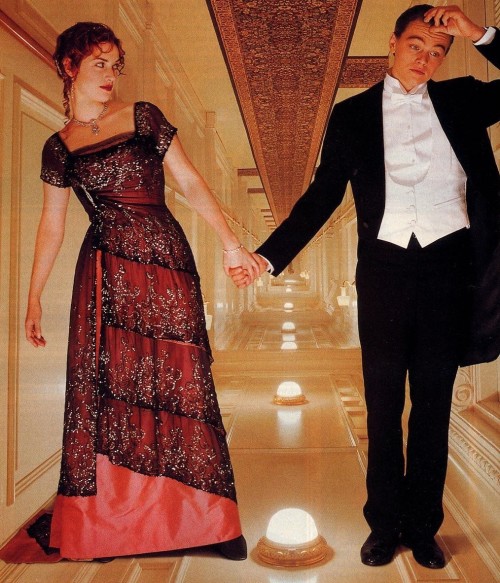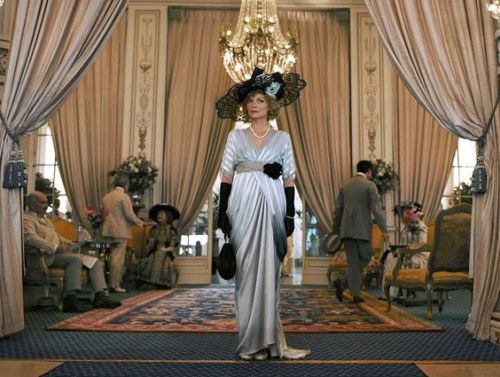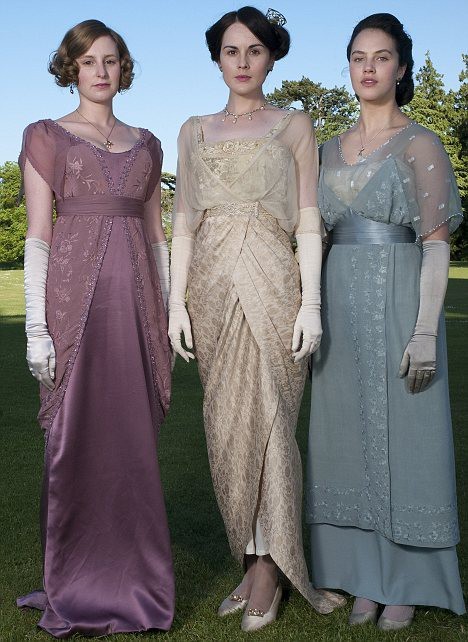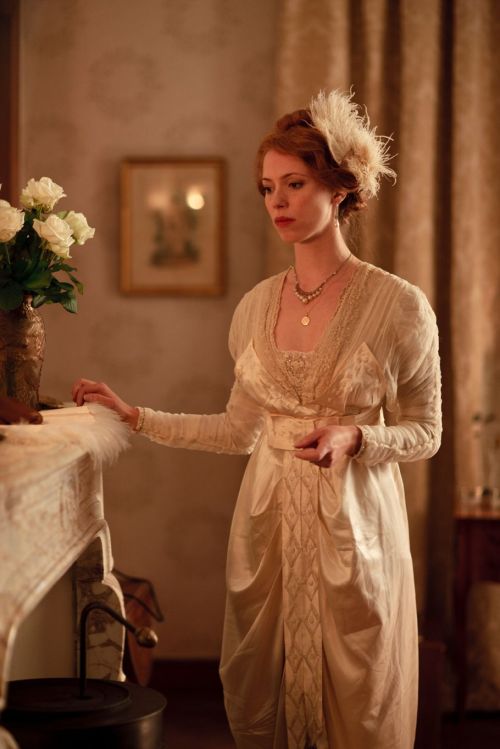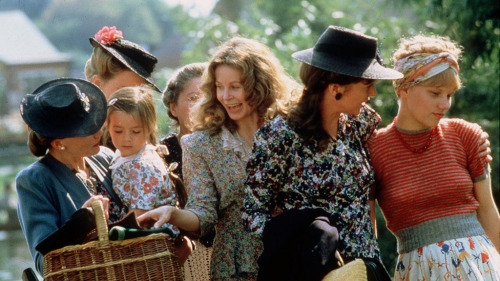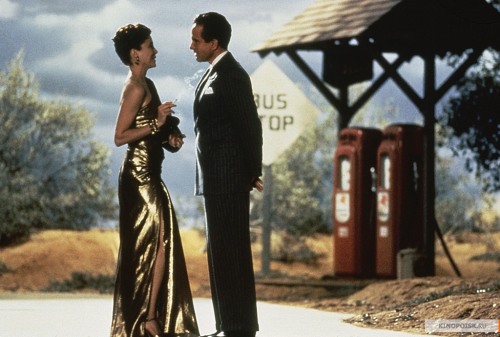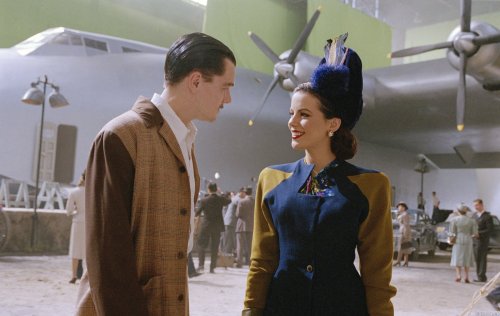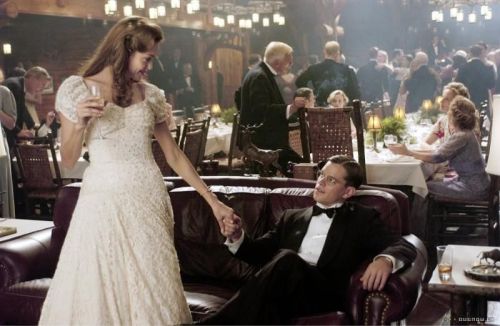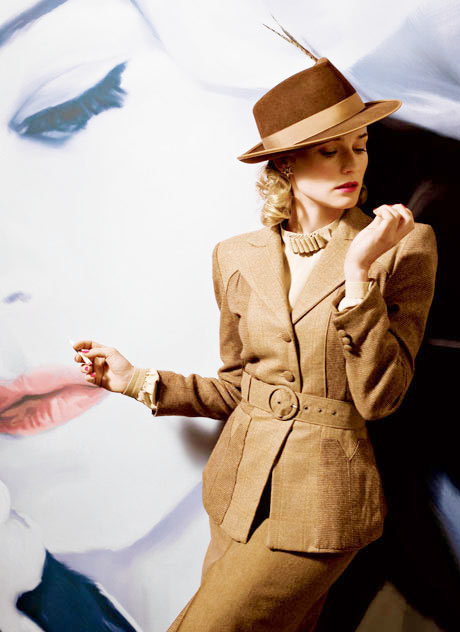
“DJANGO UNCHAINED” (2012) Review
Over three years following the release of his 2009 movie, “INGLORIOUS BASTERDS”, Quentin Tarantino courted success and controversy with a new tale set the past. Called “DJANGO UNCHAINED”, this new movie combined the elements of the Old West and Old South and told the story about a recently freed slave-turned-bounty hunter in search of his still enslaved wife.
The movie begins with a gang of male slaves being transported across Texas by a group of slavers called the Speck brothers. The group encounter Dr. King Schultz, a German-born dentist, who also happens to be a bounty hunter. Schultz offers to purchase Django, whom he believes can identify a trio of murderous siblings called the Brittle brothers, who had worked as overseers for Django’s previous owner. The Specks become hostile and Schultz kills one of the brothers. He then frees Django and leaves the wounded brother behind to be killed by the newly freed slaves. Django and Schultz come to an agreement in which the latter will give the former freedom, a horse and $75 for helping him identify the Brittle brothers. Once the pair achieve their goal at a Tennessee plantation owned by one Spencer “Big Daddy” Bennett, Schultz takes on Django as his associate and over the winter, collect a number of bounties. In the following spring, Schultz offers to help Django track down the latter’s wife, Broomhilda von Shaft. They discover that she is owned by a brutal, yet charming Mississippi planter named Calvin Candie. The pair realize that in order to rescue Broomhilda, they would have to pose as potential buyers of a fighter slave in order to secure an invitation at Candie’s plantation called Candyland.
Even before its initial release in movie theaters in late December, “DJANGO UNCHAINED” managed to attract a good deal of controversy. Producer/director Spike Lee declared the movie as an insult to his ancestors in a magazine article and his refusal to see it. Others have criticized the film for its violence and its use of the word “nigger”. And some have criticized the movie for historical inaccuracy. They claimed that the practice of fighting Mandingo slaves never existed and that Tarantino depicted the Klu Klux Klan a decade before its actual existence. And Jeff Kuhner of The Washington Times complained that: “Anti-white bigotry has become embedded in our postmodern culture. Take Django Unchained. The movie boils down to one central theme: the white man as devil — a moral scourge who must be eradicated like a lethal virus.”
Mind you, I have my own complaints about “DJANGO UNCHAINED”. Actually, I have three complaints. One, I found the movie’s chronological setting rather confusing. According to the movie’s opening, it began in “1858 – Two years before the Civil War”. Judging by the weather, Django’s first meeting with Schultz in Texas occurred in the fall. Which probably means that the movie began two-and-a-half years before the Civil War, not two years. Yes, I am being anal about this. However, Django and Schultz accompanied Candie to Candyland in early May 1858 . . . at least according to a scene that featured Candie’s head slave Stephen writing out a check for supplies. It is quite obvious that Tarantino got his time frame a little off. Was “DJANGO UNCHAINED” set between the fall of 1858 and the spring of 1859? Or was it set between the fall of 1857 and the spring of 1858? Only Tarantino can answer this. I also found the character of Broomhilda von Shaft slightly underdeveloped. Some have claimed that her character is passive. I would disagree, considering she was introduced being punished for attempting to run away from Candyland. But aside from a scene or two, I feel that Tarantino could have done a little more with her character. And three, I have mixed feelings about Tarantino’s use of flashbacks in this movie. Some of the flashbacks were well utilized – including those featuring Django’s memories of Broomhilda being whipped and branded as a runaway, Schultz’s trauma over witnessing the mutilation of a Candie slave named D’Artagnan, and Big Daddy organizing a group of night riders to attack Django and Schultz. But some of the flashbacks seemed to go by so fast that I found their addition to the film unnecessary.
As for the other complaints about the movie, I do have a response. Spike Lee is entitled to his decision not to see the movie. However, I do find his willingness to condemn the movie without seeing it rather strange. Criticism of Tarantino’s use of violence in his movies have become repetitive in my eyes. “DJANGO UNCHAINED” is a Quentin Tarantino movie. Can someone name one of his movies that did not feature any violence? Because I cannot. And his recent films do not strike me as violent as earlier films such as 1993’s “RESERVOIR DOGS”. Also, violence has played a part in many slave societies throughout history . . . including U.S. slavery. Yes, the Ku Klux Klan was first organized in the late 1860s, after the Civil War. But the Klan’s origins came from patrol riders, who were recruited by planters in many Southern states to maintain vigilance of both slaves and free black in local rural neighborhoods. So, the idea of “Big Daddy” Bennett organizing a group of local riders to attack Django and Schultz is not implausible.
In response to Jeff Kuhner’s accusation of anti-white bigotry, Tarantino not only created the German-born Schultz, who helped Django attain freedom and find Broomhilda; but also a Western sheriff portrayed by television veteran Lee Horsley (“MATT HOUSTON” anyone?), who seemed very friendly to both the German immigrant and the former slave. Tarantino also created Candyland’s head house slave, Stephen, who proved to be one of the film’s worst villains. So much for Kuhner’s accusation. A great deal of “DJANGO UNCHAINED” is set in the pre-Civil War South and its topic happens to be about American slavery. The use of “nigger” is historically accurate for the movie’s setting. And I am surprised that no one has complained about the slur being used in Steven Spielberg’s recent movie, “LINCOLN”. Hell, the word is used throughout productions such as the two “ROOTS” miniseries, the three “NORTH AND SOUTH” miniseries, “QUEEN”, the 1971 movie “SKIN GAME” and in a good number of other movie and television productions set in antebellum and Civil War America. Even the use of the slur in a production set in the 19th century North would be historically accurate. I also recall the use of racial slurs for whites in a few scenes. As for Tarantino’s use of Mandingo fighting slaves in the movie . . . I have no explanation for its presence in this film. There is no historical evidence of this particular sport. And I suspect that Tarantino was simply inspired by the 1975 movie, “MANDINGO” and Kyle Onstott’s 1957 novel upon which the latter was based.
So . . . how do I feel about “DJANGO UNCHAINED”? Frankly, I believe it is one of the best movies of 2012. And I also consider it to be another cinematic masterpiece by Quentin Tarantino. One of the aspects of “DJANGO UNCHAINED” was Tarantino’s ability to take a rather dark topic like slavery and fashioned it into a explosive mixture of action, drama, suspense and some comedy. Many have complained that the movie should have been a straight drama, considering its topic. But I disagree. Yes, “DJANGO UNCHAINED” could have been an effective straight drama. But Tarantino decided to take a rare and unique route in unfolding his tale. And in doing so, he managed to fashioned a fascinating story that allowed me to experience an array of emotions that left me more than satisfied by the movie’s last scene.
“DJANGO UNCHAINED” was not the first time comedy was used to reveal one of the darkest episodes in this country’s history. This has been done in “SKIN GAME” and in television shows such as “BEWITCHED” and the comedy sketch series, “KEY & PEELE”. Tarantino used the same mixture of pathos, horror, drama and comedy for many of his past movies – especially in “INGLORIOUS BASTERDS”. I found this use of humor especially effective in scenes that included the surviving Speck brother’s attempt to convince the slaves freed by Schultz not to kill him. I never knew that James Russo, who portrayed the surviving Speck brother, could be so funny. Django and Schultz’s little exchange regarding the former’s identification of the Sprittle brothers struck me as funny. I could say the same about Stephen’s reaction to Candie’s treatment of Django as a house guest and Lara Lee Candie-Fitzwilly’s (Candie’s sister) futile attempts to attract Schultz’s attention. But the funniest sequence has to be the flashback featuring “Big Daddy” Bennett’s recruitment of night riders for an attack on Django and Schultz. In fact, that particular scene practically had me rolling with laughter.
Some people have complained that “DJANGO UNCHAINED” is basically a revenge tale for African-Americans. I find this accusation rather odd, considering that Django’s main objective was to find Broomhilda and get her out slavery by any means possible. And despite the movie’s prevalent humor, Tarantino did not hold back in presenting not only the horrors and emotional traumas of slavery, but also racism. This was especially true in a handful of scenes in the movie. The opening scene featured an emotionally shell shocked Django being transported across Texas as part of a slave coffle. Other traumatic scenes include Candie’s little speech on the inferiority of blacks, the erruption of violence at Candyland that resulted in Django hanging from a barn’s roof, naked and bound and Stephen’s maleovelent revelation of Django’s fate as a slave for a Mississippi mining company. One horrifying scene that I found particularly brutal was a flashback featuring Broomhilda’s brutal whipping at the hands of the Brittle brothers, while Django desperately tries to convince one of the brothers to spare her.
I really do not know what to say about the performances featured in the movie. I realize there are no Academy Award nominations for ensemble casts. If there were, I would nominate the cast of “DJANGO UNCHAINED”. One, Tarantino cast old movie and television veterans in cameo roles. I have already mentioned Lee Horsley and James Russo. I also spotted the likes of Russ and Amber Tamblyn, Don Stroud, Tom Wopat, Cooper Huckabee, Robert Carradine, Michael Parks and a humorus special guest appearance by Franco Nero. Both Bruce Dern and M.C. Gainey (of “LOST”) were especially scary in their brief appearances as Old Man Carrucan (Django and Broomhilda’s former owner) and Big John Brittle. Both Dana Michelle Gourrier and Nichole Galicia gave solid performances as Cora and Sheba, Candie’s housekeeper and concubine respectively. And Dennis Christopher’s performance as Calvin Candie’s obsequious attorney, Leonide Moguy, struck me as spot-on.
Don Johnson provided a skillful combination of charm, menace and humor in his role as Spencer “Big Daddy” Bennett, the Tennessee planter who served as the Brittle brothers’ current employer. Jonah Hill had a funny cameo as one of his night riders. I could say the same about Miriam F. Glover, who gave one of the movie’s funniest lines, while portraying one of Big Daddy’s house slaves. Ato Essandoh of A&E’s “COPPER” was very effective as D’Artagnan, the frightened fighting slave whose runaway attempt led to his brutal death. Laura Cayouette’s performance as Lara Lee Candie-Fitzwilly, Candie’s widowed sister, struck me as effective. On one hand, I found her attempts to seduce Schultz rather funny. On the other hand, her outrage over Candie’s attempt to display a naked Broomhilda during supper provided a great deal of tension in the scene. Walton Goggins gave a memorable and scary performance as one of Candie’s henchmen, Billy Crash. James Remar got to portray two intimidating characters – Ace Speck and Candie’s main henchman, Butch Pooch. And he did a damn good job with both roles.
Although I had been critical of Tarantino’s creation of the Broomhilda von Shaft, I must admit that Kerry Washington still managed to wring out a first-rate performance from the role. I especially impressed with her in scenes that featured Broomhilda’s tense encounters with Stephen; and her subtle, yet pleased reaction to Schultz’s purchase of her from Candie and her painful whipping by the Brittle brothers in one of the flashback. And I must admit that I found that last shot of her removing a shotgun from her saddle rather interesting. Perhaps after all that Broomhilda had endured, she was not taking any chances. I believe that the year 2012 will prove to be one of Samuel L. Jackson’s best years professionally. Aside from portraying Nick Fury in the year’s biggest hit, “THE AVENGERS”; he got to portray one of the most complex and villainous roles in “DJANGO UNCHAINED” as Candie’s trusted and malevolent head house slave, Stephen. Watching the movie, I was struck at how much Stephen reminded me of the Mr. Carson character from the British television series, “DOWNTON ABBEY”. Both characters possessed the same blinding loyalty, snobbery, jealousy over his position within the slave hierarchy, and anger toward anyone from their background who managed to rise higher than they (for example: Django). Jackson did a superb job in not only conveying Stephen’s penchant for utilizing the old “Puttin’ on Old Massa” routine publicly, but also his intelligence while in the private company of Django, Broomhilda or Candie. And by the way, the man has a nice singing voice. Many people have expressed surprise at Leonardo Di Caprio’s portryal of the villanous, yet charsmatic Calvin Candie. I was not that surprised, considering I have seen him portray a villain before – as the cold-blooded Louis XIV in 1998’s “THE MAN IN THE IRON MASK”. But I do believe that Candie not only proved to be a more memorable villain, but also one of the actor’s best roles ever. He was fantastic as the charming, yet brutal Candie . . . and at the same time rather contradictory. It was obvious that Di Caprio’s Candie fervently believed in the superiority of whites; yet at the same time, he had no problems with allowing Stephen to handle the plantation’s finances or accepting the elderly slave’s intelligence and sharp observations about Django, Schultz and Broomhilda with very little reluctance.
Instead of portraying a villain, Christoph Waltz portrayed Django’s friendly, yet ruthless mentor and partner; the German-born dentist-turned-bounty hunter, Dr. King Schultz. And he was fantastic. Waltz effectively portrayed Schultz’s cold-blooded pursuit of wanted criminals for profit, yet at the same time; conveyed the character’s disgust over the institution of slavery and open-mindedness toward Django, Broomhilda and other slaves. Waltz’s best moments proved to be Schultz’s encounter with the Speck brothers and Django in Texas, his taking down of the wanted Sheriff Bill Sharp (portrayed by Don Stroud), his reaction to D’Artagnan’s mauling and the revelation of his disgust toward Candie. And Waltz proved to have great screen chemistry with Jamie Foxx. I believe that the latter’s portrayal of the title character has proven to be vastly underrated by the majority of film critics and some moviegoers. I am a little disappointed, but not surprised. Django turned out to be a somewhat introverted character that was not inclined to speak very much . . . whether as a slave or a free man. Critics and filmgoers are not inclined to pay much attention to non-showy characters. Since Django proved to be a quiet character, Foxx resorted to good old-fashioned screen acting to convey most of the character’s non-speaking moments. And he did a superb job in portraying Django’s array of emotions – especially in the opening scene featuring the slave coffle in Texas, Schultz’s killing of the criminal, his first view of Broomhilda at Candyland, and the confrontation with Candie during the latter’s supper party. Ironically, another one of Foxx’s best moments proved to be quite verbal in which he attempts to con a group of slavers for a mining company to take him back to Candyland in order to collect on a fake bounty. In the end, Foxx did a superb job in developing Django from a slave in shock over the traumatized separation from his wife to the soft-spoken, yet self-assured man who could be very ruthless when the situation demanded it.
I also have to say a word about the movie’s behind-the-scene production. I was impressed by Sharen Davis’ costume designs. She did a solid job in re-creating the fashions of the late antebellum period. However, I noticed a few oddball designs for Candie’s slave mistress Sheba and a maid at a social club in Greenville, Mississippi; reflecting the planter’s penchant for anything French. I suspect this was a visual joke on Tarantino’s part. I was also impressed by J. Michael Riva’s production designs and Leslie A. Pope’s set decorations in the sequences for the Texas town featured in the movie’s first 10 to 20 minutes, Candie’s Napoleon Club in Greenville and especially the interiors for Candyland’s mansion. Robert Richardson did an excellent in capturing the beauty of California, Louisiana and especially Wyoming with his photography. As he had done for “INGLORIOUS BASTERDS”, Tarantino used already recorded music to serve as the score for his movie. I did notice that a few songs – especially one for the opening title sequence – seemed to have been written specifically for the movie. However, I do not know who may have written them.
It occurred to me that “DJANGO UNCHAINED” was Tarantino’s second period piece in a row. And I found myself wondering if he planned to write and direct a third period movie as part of some kind of semi-historical trilogy. Whether he does or not, I must say that I was impressed with “DJANGO UNCHAINED”. More than impressed. I believe it is one of the best movies I have seen released in 2012. And I feel that it is one of the writer-director’s more original works, due to superb writing, direction and an excellent cast led by Jamie Foxx and Christoph Waltz.
P.S. Check out this photo:

Ohmigod! It’s Crockett and Tubbs!




















